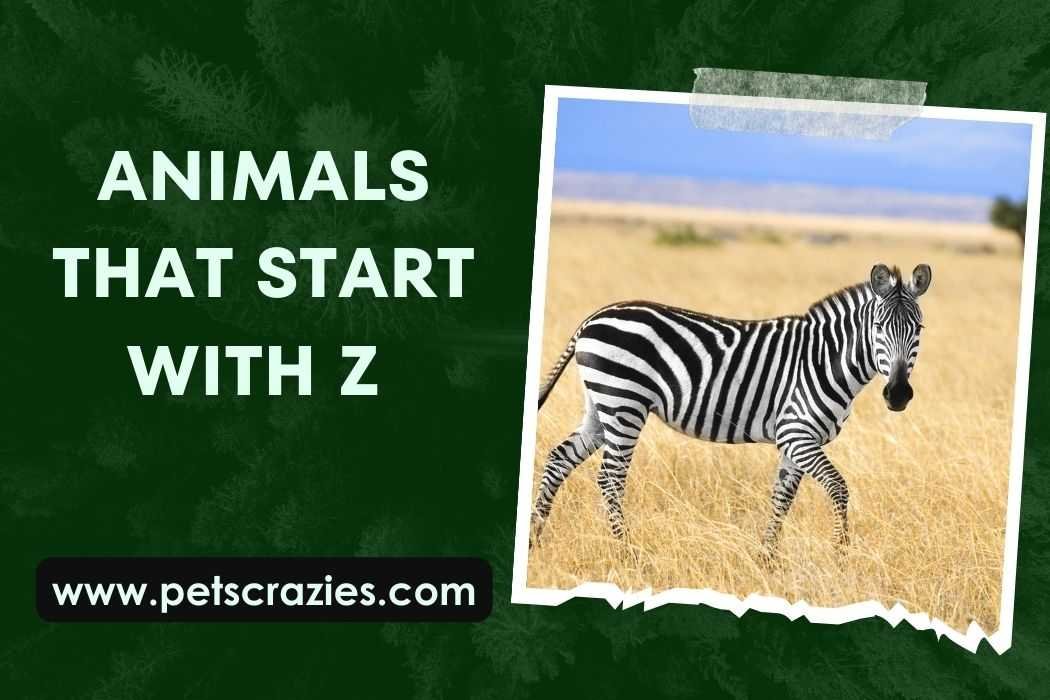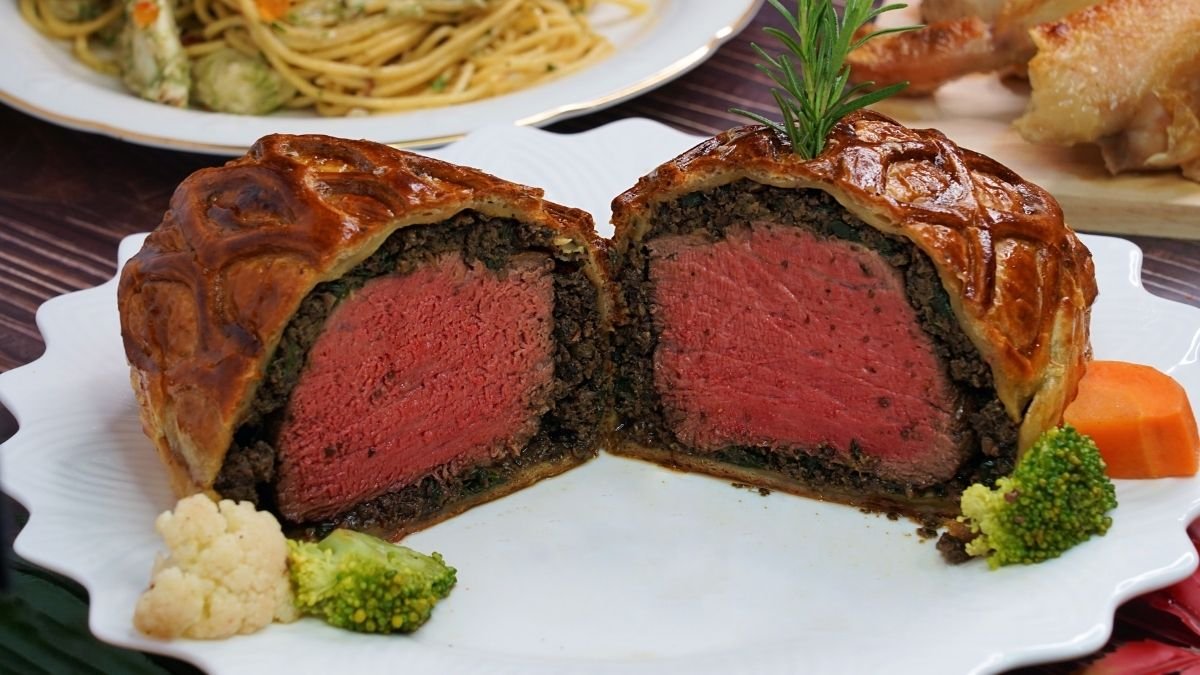Zoos and wildlife documentaries often highlight the usual suspects – lions, tigers, elephants – but what about those creatures starting with ‘Z’? Ever wondered why they don’t get as much spotlight? It’s a curious world in the animal kingdom, especially at the end of the alphabet.
Think about it: how many animals can you name that start with ‘Z’? Not many, right? This scarcity makes ‘Z’ animals somewhat of a mystery. Are they just elusive or underappreciated? Each ‘Z’ animal brings its own unique flair to the biodiversity party.
List Of Animals That Start With Z
- Zebra
- Zebu
- Zorilla (also known as the Striped Polecat)
- Zebrafish
- Zonkey
- Zorse
- Zokor
- Zanj Sun Squirrel
- Zigzag Heron
- Zebra Shark
- Zebra Pleco
- Zebra Mussels
- Zebra Finch
- Zebra Dove
- Zenaida Dove
- Zebra-Tailed Lizard
- Zanzibar Red Colobus
- Zorro
- Zebra Spider
- Zebra Duiker
- Zebra Swallowtail Butterfly
- Zonure
- Zebroid
- Zalophus (California Sea Lion)
- Zalambdalestes
- Zorro Chilote
- Zorros Voladores (Flying Foxes)
- Zosterops (Typical White-eye)
- Zarudny’s Jird
- Zigzag Salamander
Animals That Start With Z (Fun Facts & Species Details)
1. Zebra

Fun Fact: Zebras are one of the few mammals that can see in color, although they cannot see the color orange.
| Detail | Information |
| Scientific Name | Equus zebra, Equus quagga, Equus grevyi |
| Origin | Africa |
| Family | Equidae |
2. Zebu

Fun Fact: The zebu has been a part of human art and culture for thousands of years, appearing on coinage, architecture, and statues.
| Detail | Information |
| Scientific Name | Bos taurus indicus |
| Origin | Southern Asia |
| Family | Bovidae |
3. Zorilla (Striped Polecat)

Fun Fact: Zorillas can spray a foul-smelling liquid as a defense mechanism, similar to skunks, which can cause temporary blindness if it gets into the eyes of an attacker.
| Detail | Information |
| Scientific Name | Ictonyx striatus |
| Origin | Africa, Middle East |
| Family | Mustelidae |
4. Zebrafish

Fun Fact: Zebrafish are one of the few species of fish that have been sent to space and are frequently used as model organisms for genetic and developmental studies.
| Detail | Information |
| Scientific Name | Danio rerio |
| Origin | Northern India, Northern Pakistan, Bhutan, Nepal |
| Family | Cyprinidae |
5. Zonkey

Fun Fact: Zonkeys are hybrids between zebras and donkeys and are capable of running at speeds of up to 35 mph (60 kph).
| Detail | Information |
| Scientific Name | Equus zebra × Equus asinus |
| Origin | Hybrid (Africa, Zoos Worldwide) |
| Family | Equidae |
6. Zorse

Fun Fact: A Zorse is a hybrid animal resulting from the crossbreeding of a zebra and a horse. They inherit the striking striped pattern from their zebra parent and the size and shape of a horse. Each Zorse has a unique stripe pattern, much like human fingerprints.
| Detail | Information |
| Scientific Name | Equus zebra × Equus caballus |
| Origin | Hybrid (Zebras and Horses) |
| Family | Equidae |
7. Zokor

Fun Fact: Zokors are unique rodents known for their underground lifestyle. They have fewer predators due to their subterranean habitat, and interestingly, they do not have external ears!
| Detail | Information |
| Scientific Name | Eospalax (Genus) |
| Origin | Central and East Asia |
| Family | Spalacidae |
8. Zanj Sun Squirrel

Fun Fact: The Zanj Sun Squirrel, found in Africa, is known for its agility and speed. It can leap impressively between trees while searching for food, making it a fascinating sight in the wild.
| Detail | Information |
| Scientific Name | Heliosciurus undulatus |
| Origin | Eastern Africa |
| Family | Sciuridae |
9. Zigzag Heron

Fun Fact: The Zigzag Heron is a mysterious and elusive bird. It is named for its unique zigzag flight pattern, which makes it quite a spectacle when it takes to the air.
| Detail | Information |
| Scientific Name | Zebrilus undulatus |
| Origin | South America |
| Family | Ardeidae |
10. Zebra Shark

Fun Fact: Despite its name, the Zebra Shark is actually more spotted than striped as an adult. Young zebra sharks have stripes, which transform into spots as they mature.
| Detail | Information |
| Scientific Name | Stegostoma fasciatum |
| Origin | Tropical Indo-Pacific waters |
| Family | Stegostomatidae |
11. Zebra Pleco
Fun Fact: The Zebra Pleco is highly sought after in the aquarium trade for its striking black and white stripes, resembling a zebra’s pattern. It’s also known for being a nocturnal species, being more active at night.
| Detail | Information |
| Scientific Name | Hypancistrus zebra |
| Origin | Brazil, South America |
| Family | Loricariidae |
12. Zebra Mussels
Fun Fact: Zebra Mussels are known for their incredible ability to filter water, which can actually improve water quality. However, they are also invasive and can cause significant ecological and economic damage.
| Detail | Information |
| Scientific Name | Dreissena polymorpha |
| Origin | Southeast Russia |
| Family | Dreissenidae |
13. Zebra Finch
Fun Fact: The Zebra Finch is a popular pet bird known for its cheerful and loud song. They are highly social birds and often seen in large flocks in the wild.
| Detail | Information |
| Scientific Name | Taeniopygia guttata |
| Origin | Australia |
| Family | Estrildidae |
14. Zebra Dove
Fun Fact: Zebra Doves are known for their peaceful and gentle nature. They have a distinctive, repetitive cooing call and are often found in pairs.
| Detail | Information |
| Scientific Name | Geopelia striata |
| Origin | Southeast Asia |
| Family | Columbidae |
15. Zenaida Dove
Fun Fact: The Zenaida Dove is known for its fast and direct flight. It has a distinctive ‘coo-oo-oo’ sound, which is often heard in the regions it inhabits.
| Detail | Information |
| Scientific Name | Zenaida aurita |
| Origin | Caribbean and Americas |
| Family | Columbidae |
16. Zebra-Tailed Lizard
Fun Fact: The Zebra-Tailed Lizard is known for its distinctive black and white striped tail and its impressive speed. It can run on its hind legs to escape predators.
| Detail | Information |
| Scientific Name | Callisaurus draconoides |
| Origin | Southwestern United States and Mexico |
| Family | Phrynosomatidae |
17. Zanzibar Red Colobus
Fun Fact: This species is unique to the Zanzibar archipelago and is known for its striking red and black coat. It’s one of Africa’s most endangered primates.
| Detail | Information |
| Scientific Name | Piliocolobus kirkii |
| Origin | Zanzibar |
| Family | Cercopithecidae |
18. Zorro
Fun Fact: “Zorro” is a common name in Spanish for several types of canids, including the South American Gray Fox. They are known for their cunning and adaptability.
| Detail | Information |
| Scientific Name | Lycalopex griseus (South American Gray Fox) |
| Origin | South America |
| Family | Canidae |
19. Zebra Spider
Fun Fact: Zebra Spiders are small jumping spiders known for their black and white striped bodies. They don’t use webs to catch prey but rather jump on them with precision.
| Detail | Information |
| Scientific Name | Salticus scenicus |
| Origin | Holarctic |
| Family | Salticidae |
20. Zebra Duiker
Fun Fact: The Zebra Duiker is a small antelope known for its distinctive zebra-like stripes. It’s one of the most striking duikers due to its unique appearance.
| Detail | Information |
| Scientific Name | Cephalophus zebra |
| Origin | West Africa |
| Family | Bovidae |
21. Zebra Swallowtail Butterfly
Fun Fact: The Zebra Swallowtail Butterfly has a unique wing shape and pattern, with long tails resembling a swallow’s tail. Its larvae feed exclusively on pawpaw leaves.
| Detail | Information |
| Scientific Name | Eurytides marcellus |
| Origin | Eastern North America |
| Family | Papilionidae |
22. Zonure
Fun Fact: Zonures, also known as Girdled Lizards, have a distinctive armor of hard, bony scales around their bodies, which gives them a very prehistoric appearance.
| Detail | Information |
| Scientific Name | Cordylus (Genus) |
| Origin | Southern Africa |
| Family | Cordylidae |
23. Zebroid
Fun Fact: A Zebroid is a hybrid between a zebra and any other equine, often a horse or donkey. These hybrids inherit the distinctive stripes of zebras, often on parts of their bodies.
| Detail | Information |
| Scientific Name | Equus zebra hybrid |
| Origin | Hybrid |
| Family | Equidae |
24. Zalophus (California Sea Lion)
Fun Fact: California Sea Lions are known for their intelligence and playfulness. They are often seen performing acrobatic tricks in the wild, like high-speed porpoising and leaping out of the water.
| Detail | Information |
| Scientific Name | Zalophus californianus |
| Origin | Western North America |
| Family | Otariidae |
25. Zalambdalestes
Fun Fact: Zalambdalestes was a small mammal that lived during the Late Cretaceous period. It is known only from fossil remains and was an early relative of modern-day mammals.
| Detail | Information |
| Scientific Name | Zalambdalestes lechei |
| Origin | Mongolia (fossil) |
| Family | Zalambdalestidae |
26. Zorro Chilote
Fun Fact: The Zorro Chilote, or Chilote Fox, is a small and elusive canid native to the Chiloé Island in Chile. It’s known for its adaptability to different habitats within the island.
| Detail | Information |
| Scientific Name | Lycalopex fulvipes |
| Origin | Chiloé Island, Chile |
| Family | Canidae |
27. Zorros Voladores (Flying Foxes)
Fun Fact: Flying Foxes are the largest bats in the world. They don’t use echolocation like other bats; instead, they rely on their keen eyesight and sense of smell.
| Detail | Information |
| Scientific Name | Pteropus (Genus) |
| Origin | Tropics of Asia, Africa, and Australia |
| Family | Pteropodidae |
28. Zosterops (Typical White-eye)
Fun Fact: Typical White-eyes are named for the distinctive white ring around their eyes. They are incredibly adaptable and are among the most rapidly evolving bird species.
| Detail | Information |
| Scientific Name | Zosterops (Genus) |
| Origin | Africa, Asia, Australasia |
| Family | Zosteropidae |
29. Zarudny’s Jird
Fun Fact: Zarudny’s Jird is a type of rodent known for its burrowing lifestyle. It’s adapted to arid environments and has a diet primarily consisting of seeds and vegetation.
| Detail | Information |
| Scientific Name | Meriones zarudnyi |
| Origin | Central Asia |
| Family | Muridae |
30. Zigzag Salamander
Fun Fact: The Zigzag Salamander is named for the distinctive zigzag pattern on its back. It’s a small salamander that prefers moist, wooded habitats.
| Detail | Information |
| Scientific Name | Plethodon dorsalis |
| Origin | Eastern United States |
| Family | Plethodontidae |





